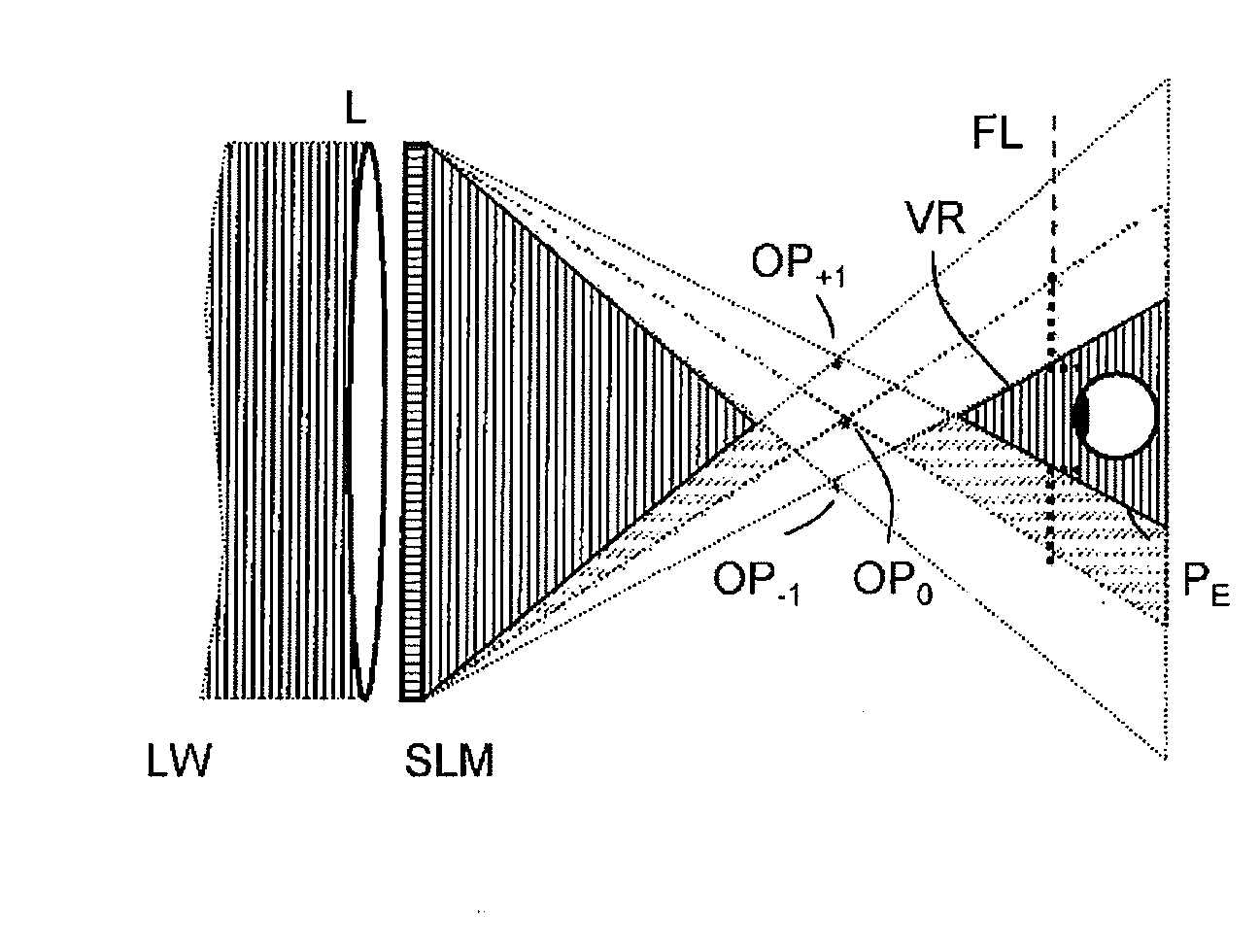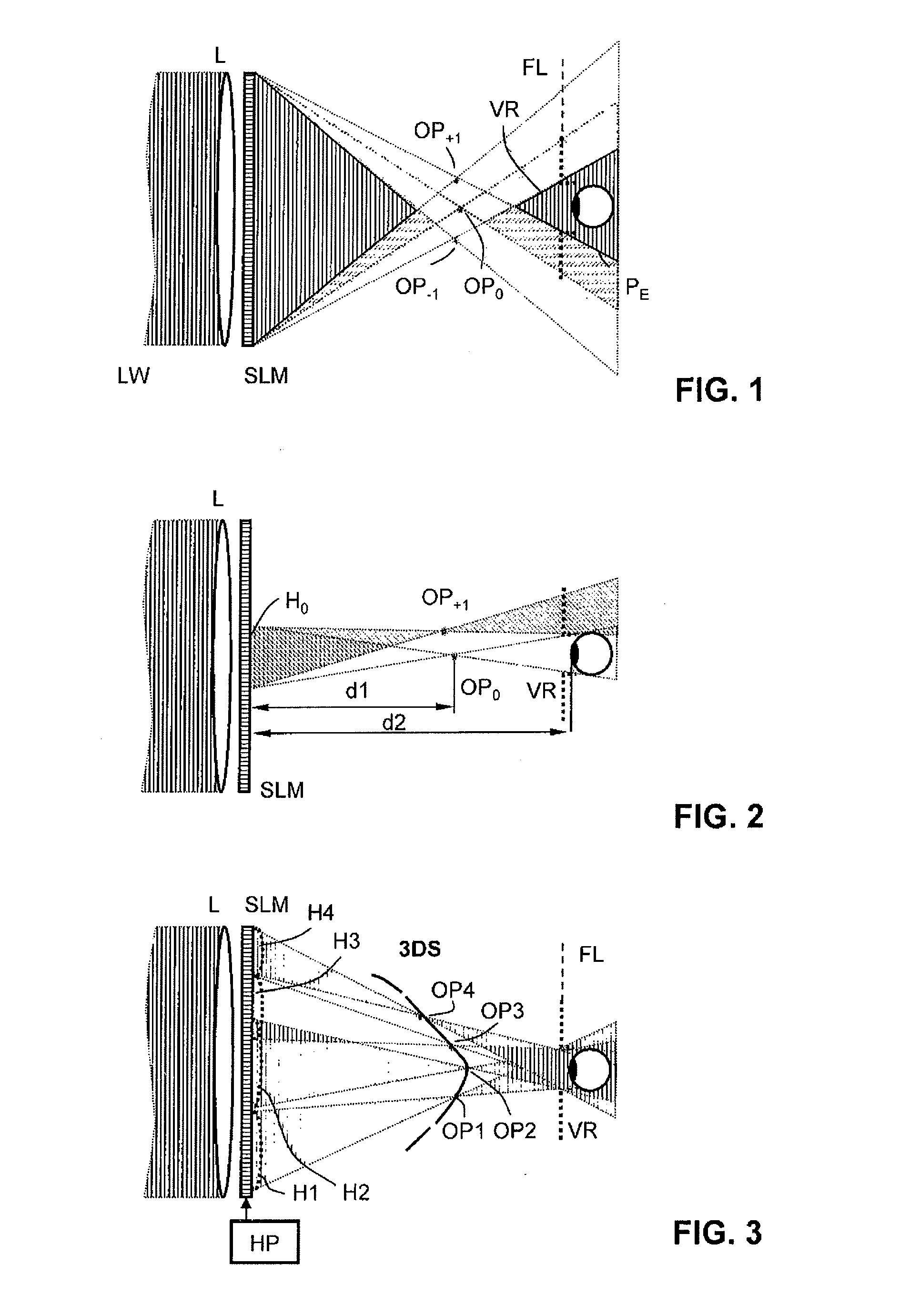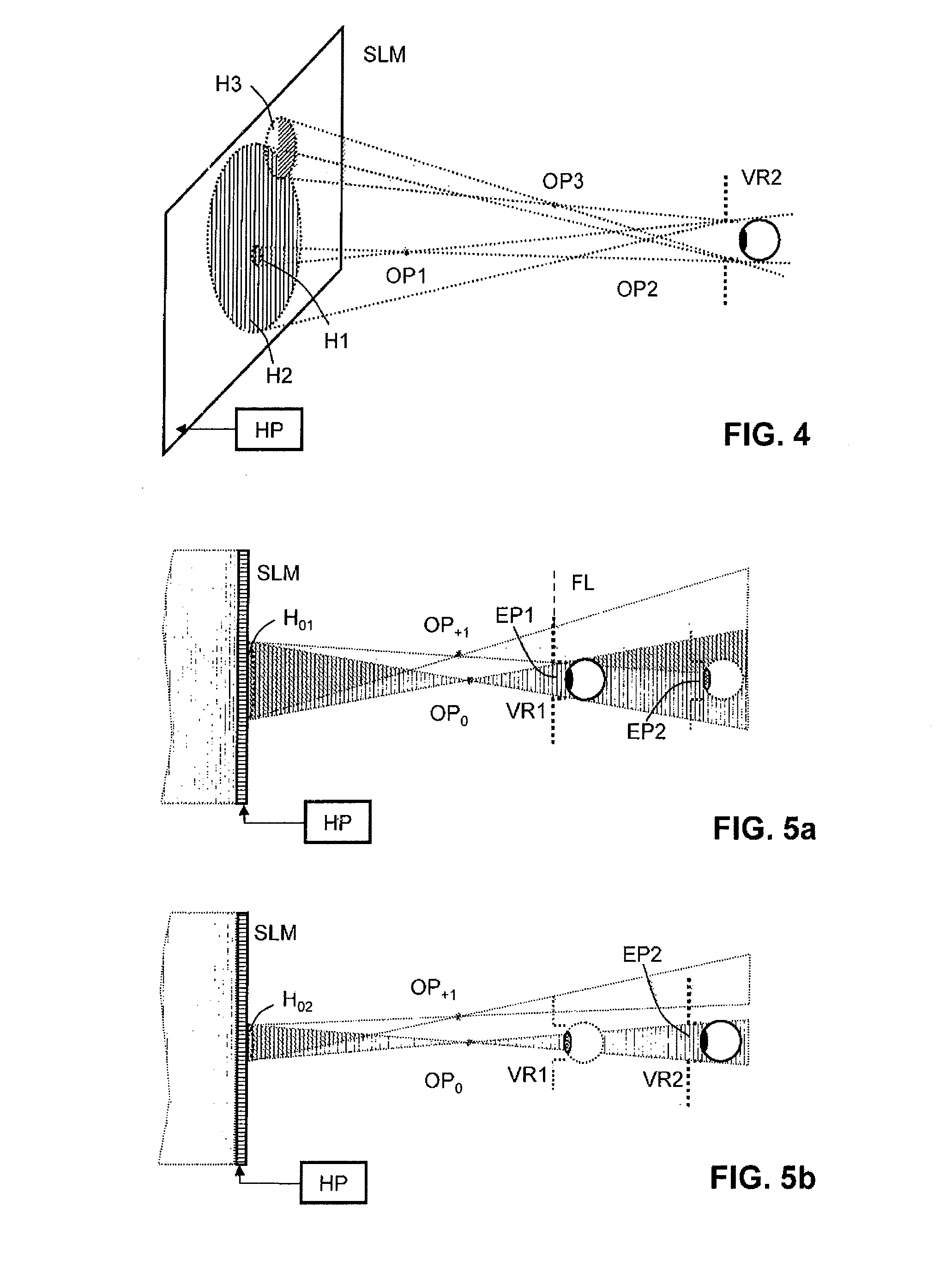Holographic Reconstruction system with a Tracking Device for the Reconstruction
a tracking device and reconstruction technology, applied in the field of holographic reconstruction systems, can solve the problems of only visible reconstruction without errors, difficult to be detected for the observer without any aids, and inability to compensate for disturbances through filtering
- Summary
- Abstract
- Description
- Claims
- Application Information
AI Technical Summary
Benefits of technology
Problems solved by technology
Method used
Image
Examples
Embodiment Construction
[0043]The function of the reconstruction system according to the present invention can be explained with the help of lenses and prisms which are encoded as structure of focussing lens functions and optical prism functions on the cell structure of the spatial light modulator means by the hologram processor when computing the video holograms.
[0044]FIG. 4 is a perspective view illustrating how the cell structure of the spatial light modulator SLM is encoded with the help of the example of object light points OP1 to OP3, which are selected as typical examples of a three-dimensional scene.
[0045]According to the known basic principle of the present invention, the hologram processor HP defines a hologram region H1 to H3 on the cell structure for each object light point OP1 to OP3 and computes a lens term and, if necessary, a prism term for each hologram region with the help of holographic information about the object light point. This means that each hologram region on the cell structure i...
PUM
 Login to View More
Login to View More Abstract
Description
Claims
Application Information
 Login to View More
Login to View More - R&D
- Intellectual Property
- Life Sciences
- Materials
- Tech Scout
- Unparalleled Data Quality
- Higher Quality Content
- 60% Fewer Hallucinations
Browse by: Latest US Patents, China's latest patents, Technical Efficacy Thesaurus, Application Domain, Technology Topic, Popular Technical Reports.
© 2025 PatSnap. All rights reserved.Legal|Privacy policy|Modern Slavery Act Transparency Statement|Sitemap|About US| Contact US: help@patsnap.com



